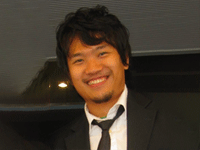
Meet Daniel Teh, a Research Assistant Professor at National University of Singapore who will share with us the importance of women's health and the use of single cell technology in his research.

Daniel Teh
Research Assistant Professor
Department of Biochemistry & Preclinical Research at the Bia-Echo Asia Center for Reproductive Longevity & Equality (ACRLE)
National University of Singapore (NUS)
What is your research focus at the Department of Biochemistry & NUS Bia-Echo Asia Center for Reproductive Longevity & Equality?
There are two focuses in my research. Firstly, to develop nanotechnology as tools to interrogate biological events, such as molecular level visualization and targeted drug delivery tools.
Secondly, within an interdisciplinary setting, we are trying to delay the onset of healthy reproductive ageing, focusing on extending women's healthspan and fertility.
Why do you think there is a need to focus on women’s health?
As more women move into leadership roles in their professional careers, we are seeing a delay in conceptions age. We all know that the fertility of women decreases with age. To address this problem, we are elucidating reproductive ageing molecular mechanisms to understand the healthspan and fertility in women. Unlike men, women healthspan and fertility decline steeply after menopause due to sudden changes in sex hormones.
We are here to develop interventions to improve the healthspan and delay the onset of menopause in women, hoping to enable spouses not to compromise in their family planning and career, especially in Singapore's context.
We had a recent collaboration where Novogene assisted in your single cell project. How would you describe the role of single cell applications in your study of development?
We used the single cell sequencing platform to probe a heterogenous ovarian cell line population that we have developed at ACRLE. Single cell RNA sequencing provides resolution and contrast at cellular levels for the differential population of cells.
We have applied single cell sequencing to understand the dynamic roles of each subsets of ovarian cells in the ovary. This can decipher their respective function and role in reproductive ageing intervention, where we hope we can reverse the functionality of reproductive decline.
Were there challenges and how did we address your needs?
The challenge is always about handling the large data sample. I am happy to have received prompt support and assistance from NovogeneAIT Genomics to expedite my research. They are always ready to provide clarity whenever needed to increase the success rate.
I have engaged NovogeneAIT Genomics to perform RNA sequencing and single cell sequencing services, where they have proven to be a trusted and reliable sequencing partner.
We noticed that you have extensive experience working at the University of Tohoku, Japan. Can you share your experience/perspective while you were there with regards to genomics?
I spent about 6 years in Japan doing my postgraduate studies in neuroscience, stem cells and optogenetics before moving back to Singapore. Here, I continue my work in optogenetic stem cell research to elucidate the genomic effect of optogenetics in neural stem cells differentiation.
I was introduced to Novogene during this time, which culminated in a publication on optogenetic stem cell work. In contrast to my previous experiences with service providers, I was impressed by Novogene's dedication and patience to guide me through RNA sequencing and data analysis workflow. This gives me the confidence to work with them on my 2nd paper.
In my 2nd paper, I applied RNA sequencing to elucidate the neuroprotective role of reactive astrocytes. Reactive astrocytes were often viewed negatively in the nervous system injury model as they prolonged inflammation of the injury site, thus preventing intrinsic repair mechanisms. However, our RNA seq results suggested that there are two sides to this story, as they provide neuroprotective cues as well.
Any further recommendations you would like to see genomics service providers value add for Researchers/ Clinicians so you can further advance your research?
Perhaps a more simplistic online platform that enables data access to projects and ease of samples collection.
Discover more of Daniel Teh's research:
Application of Optogenetics for Muscle Cells and Stem Cells.
Adv Exp Med Biol., 2021;1293:359-375
Asano T., Teh D.B.L., Yawo H.
DOI: 10.1007/978-981-15-8763-4_23.
PMID: 33398826.
Flexi-PEGDA Upconversion Implant for Wireless Brain Photodynamic Therapy.
2020 Jul;32(29):e2001459.
Teh D.B.L* (co-first author), Bansal, A.*., Chai, C.*., & et al.
DOI: 10.1002/adma.202001459.
PMID: 32484308.
Driving Neurogenesis in Neural Stem Cells with High Sensitivity Optogenetics.
Neuromol Med. 22, 139–149 (2019)
Teh D.B.L.* (co-corresponding & first author)., Prasad A., Jiang W. et al.
DOI: 10.1007/s12017-019-08573-3.
PMID: 31595404.
Transcriptome Analysis Reveals Neuroprotective aspects of Human Reactive Astrocytes induced by Interleukin 1β.
Sci Rep. 2017 Oct 25;7(1):13988.
Teh D.B.L., Prasad A., Jiang W. & et al.
DOI: 10.1038/s41598-017-13174-w.
Direct Conversion Through Trans-Differentiation: Efficacy and Safety.
Stem Cells Dev. (2017) 26(3): 154-165.
Prasad A., Teh D.B.L., Shah Jahan & et al.
DOI:10.1089/scd.2016.0174.
Regulation of later neurogenic stages of adult-derived neural stem/progenitor cells by L-type Ca2+ channels.
Dev Growth Differ. 2014;56(8):583–94.
Teh D.B.L., Ishizuka T, Yawo H. & et al.
DOI: 10.1111/dgd.12158.
PMID: 25283796.
